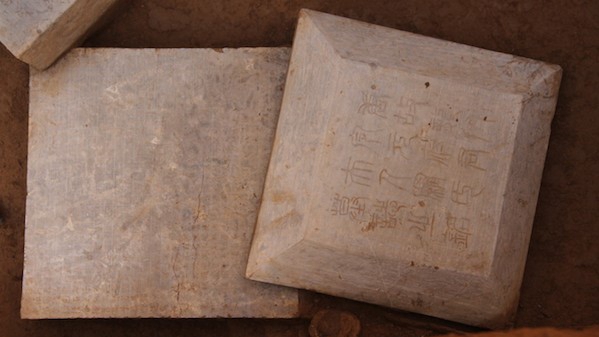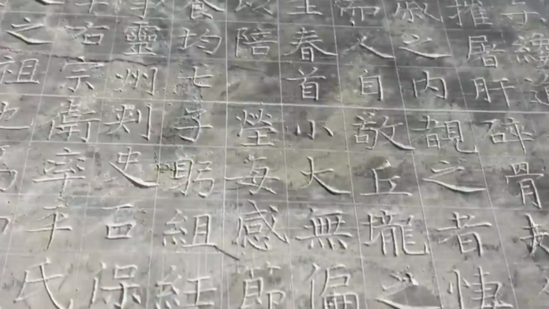00:41

An early work of Yan Zhenqing, an iconic calligraphy master in the Tang Dynasty (618-907), was found for the first time in an archaeological excavation, the official archaeological institute of northwest China's Shaanxi Province said Friday.
An epitaph from an unearthed tomb in the Xixian New Area, on the outskirts of Xi'an, was recognized as written by Yan according to the name inscribed on the stele.
Yan is regarded as one of the most eminent calligraphers in Chinese fine art history. His regular script, commonly known as Yan Script, attracted many imitators.
Since June, over 100 tombs from both Han (202 BC-220 AD) and Tang dynasties have been discovered in an area reserved for the upcoming construction of government buildings, according to Xu Weihong, a researcher with the Shaanxi Provincial Institute of Archaeology.
The epitaph with Yan's calligraphy belongs to a woman and was part of a graveyard of a family of nobles. The woman, called Luo Wanshun, died in 746, according to the epitaph. She was the wife of Yuan Daqian, a 7th-generation grandson of a prince of the Northern Wei Dynasty (386-534) and a military commander.
"It is consistent with the timeline of Yan's life in historical recordings," Xu said.
Xu cited historical recordings that showed Yan became a local official of Chang'an – today's Xi'an – in charge of public security in 746. She also said that inviting Yan to write the epitaph showed the woman's high social status.

An epitaph with Chinese master calligrapher Yan Zhenqing's calligraphy is found from an unearthed tomb in Xixian New Area, Xi'an, northwest China's Shaanxi Province. /Beijing News
An epitaph with Chinese master calligrapher Yan Zhenqing's calligraphy is found from an unearthed tomb in Xixian New Area, Xi'an, northwest China's Shaanxi Province. /Beijing News
As a politician and military general, Yan also gained fame for loyalty and bravery. During the chaotic An-Shi Rebellion (755-763), which led to the decline of the mighty Tang Dynasty, he organized people to fight against the rebels and later became a ministerial-level official. He was killed during another rebellion after refusing to surrender.
Chen Genyuan, a researcher with Xi'an Beilin Museum, said Yan is considered to have been an outstanding mix of admirable personal traits and extraordinary achievements in fine art.
"We admire beauty, but we also admire righteousness, which is also highlighted in Chinese calligraphy," Chen said.
"Yan's newly unearthed early work shows elegance that will provide a crucial reference to see his evolving calligraphic styles," he added. "We will be able to know how his art reached its peak during the later years when it was famed for its grand aura and strength."
Aside from calligraphy, the newly found tombs in the ancient city of Xi'an carry great value for scholars. Over 100 relics, including coins, figurines and jars, were found at the gravesite of Yuan and Luo, which was 35.8 meters long and 9.5 meters deep, but no human remains were found in the tomb's chamber.
(Cover: The early work of Chinese master calligrapher Yan Zhenqing in Tang Dynasty is found from an unearthed tomb in Xixian New Area, Xi'an, northwest China's Shaanxi Province. /Beijing News)
Source(s): China Daily

